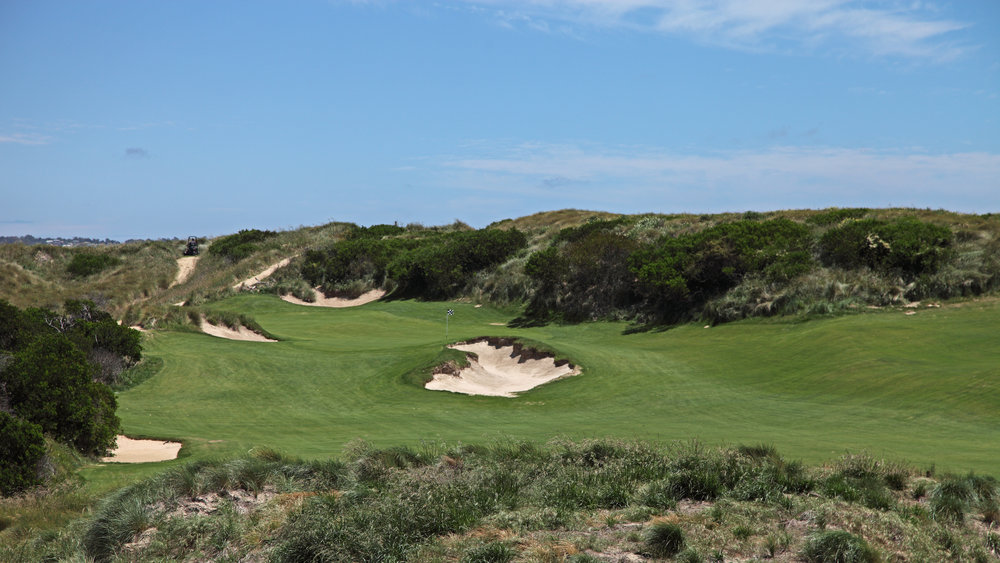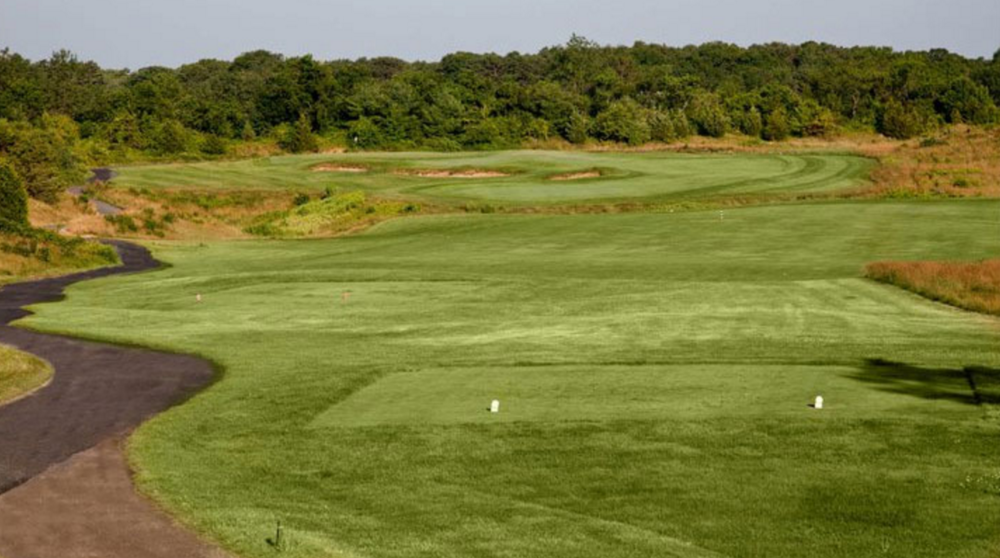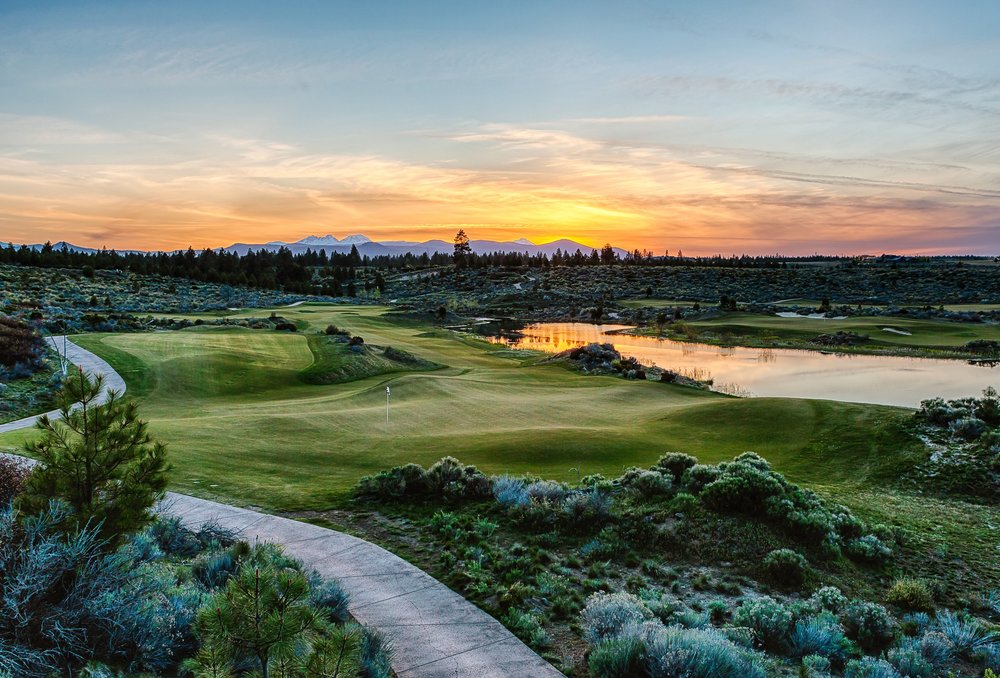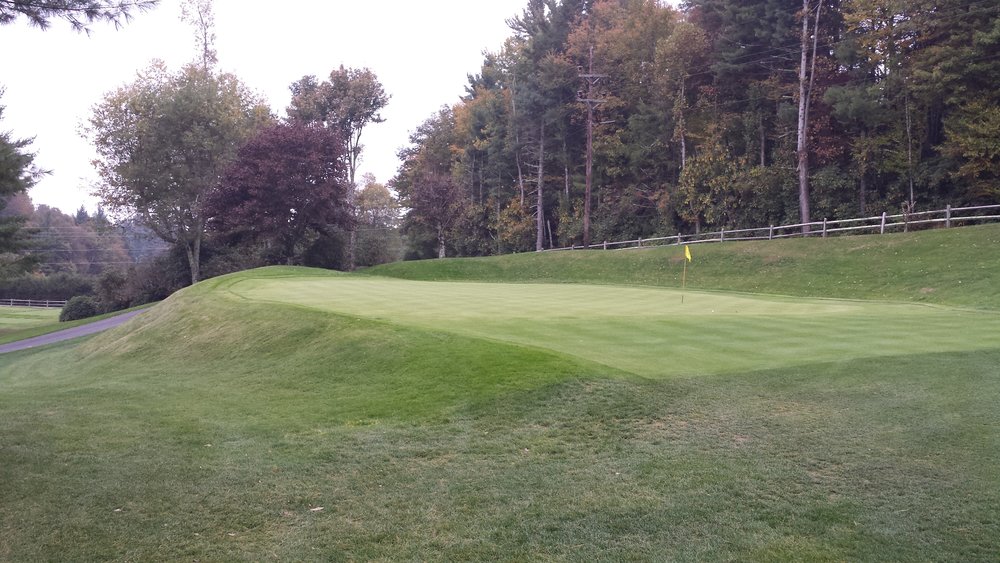What is the most overrated course from a design standpoint?
-Kyle Nathan
I can’t stand Spyglass Hill. It’s the worst golf course on a great piece of land that I’ve ever seen. It’s a target golf slog filled with forgettable holes. The best stretch of golf occurs early & the routing fizzles from the middle of the front nine until the walk up the unremarkable eighteenth. The bad routing & repetitious nature of the holes makes one wonder if there were extenuating circumstances out of the architect’s control that held the course back from achieving the remarkable potential of the land. Every time I hear somebody remark that it is a better course than Pebble Beach, my mind goes blank and I become physically incapable of hearing anything else that they have to say. – Rob Collins, King-Collins Golf Course Design (Listen to our podcast with Rob Collins here)
One of the world’s foremost architects was quoted as saying that it is more difficult to design a great short par four than a great long par four. Is this opinion generally agreed to by most architects?
-Jim Patton
I agree with the architect; I think that many other designers would agree as well. A long par-4 is defended by its length; a designer doesn’t necessarily need to put as much thought into green size and bunker placement. But to create a challenging, yet playable short par-4, a designer needs to consider multiple factors, such as the size and slope of the green, and the size and placement of bunkers and/or other features.
A great example of a well-designed short par-4 (in my opinion) is hole #3 at Barnbougle Lost Farm (276 yards; see picture below). Bill Coore had to factor in natural elements, green size and slope, and bunker placement when designing an enjoyable hole for players of all levels. To par or birdie the hole, a player must develop a risk-reward strategy that considers the prevailing winds, center bunker, and the double-tiered green. – Keith Rhebb, Keith Rhebb Design (Listen to our podcast with Keith Rhebb here)

Hole #3 at Barnbougle Lost Farm
Worst trends in modern designs, biggest mistakes made by designers and also favourite hole “type.” Drivable par 4, short hole etc.?
-Matt Geddes
Worst trend in modern design:
1. Computer Aided Design – CAD has many useful functions when it comes to calculating areas, distances, volumes, quantities, etc… However, the over use of “CAD designing” has left many new course designs soulless and lacking authentic natural character. There needs to be more emphasis placed on natural artistry and craftsmanship and less on calculated science and engineering. Would you rather have your cabinets designed and built online by IKEA, or in person by a Swiss wood crafter!?
2. Wall-to-wall irrigation – Over-watering is far worse than under-watering. Consultants and suppliers convince golf courses to over engineer their irrigation system driving up project costs unnecessarily. Green & Pristine is out, Fast & Firm is back!
3. Using the bulldozer for everything – The might and power of modern machinery is great, but often misused or overused. Bulldozers almost always over-cook modern golf courses until they are smooth, sterile and lack any natural hillock or hollow. Then to add insult to injury, a box-blade implement is used to finish off the ‘contour killing’ job. Building bunkers with a bulldozer is another unfortunate side effect to modern golf course creation.
4. Carts and Cart Paths – I get the arguments, but can’t more people just walk the course and enjoy being outdoors? Cart paths are expensive and ugly. My least favourite trend in modern golf design.
5. Landscaping – I understand it around the clubhouse, but let’s not let landscaping creep onto the golf course. Superintendents should focus on turf, not flowers.
…I could go on and on…
Biggest mistakes made by designers:
They don’t give enough credit to the “average golfer.” Golf is supposed to be difficult, not easy. By catering too much to the duffer, we are ultimately robbing them of what makes the game so attractive: the thrill of accomplishment. Golf was much more difficult back during the Golden Age. They didn’t give golf holes away on a silver platter back then – you had to earn your pars!
Favourite Hole type:
The short, drivable, par-4. The restraint required confuses good players. Love it! – Riley Johns, Integrative Golf Co. (Listen to our podcast with Riley Johns here)
For minimalists: when is it ok or not to totally alter the land for a course? (e.g. Tom Doak’s Rawls course)
-Spirit of Old Tom
There are successful examples of architects altering land utterly unsuited to golf. I haven’t seen Tom Doak’s course in Lubbock, but by all accounts, Renaissance did a remarkable job transforming a totally flat site into something very good. The most famous completely man-made course is probably Shadow Creek in Las Vegas. I’ve not seen it either, but Tom Fazio made a brilliant looking course from absolutely nothing.
In Australia, Bob Harrison (working for Greg Norman at the time) transformed a woeful site in Melbourne’s west when he built Sanctuary Lakes on a flat salt plain. All three courses justified a philosophy which was about as far from ‘minimalist’ as one could imagine. Even good and great land needs to be altered in places to make golf work. At Barnbougle Dunes, the opening tee shot was completely blind before the huge dune cutting across the front of the tee was removed. The key is to make it look as though the land hasn’t been touched and those playing the course now have no clue what the land looked like before it was changed.
Where so many Australian clubs lost much of their ‘natural’ feel was when they eschewed the use of indigenous vegetation. It was deemed acceptable, even desirable, to completely alter the look and feel of the land by planting a mix of European and ‘native’ trees (sometimes from hundreds and even thousands of miles away). Very few clubs had the discipline, inclination or foresight to limit themselves to a predominantly indigenous vegetation scheme. Now, eighty to a hundred years later and many are struggling with plantations in poor health because they are made up of trees inappropriate for the site.
Every golfer would agree a golf course should feel ‘natural’ yet the surest way to make a piece of land feel ‘unnatural’ is to plant vegetation sourced from far off places. – Michael Clayton, OCCM Golf Design (Listen to our podcast with Michael Clayton here)
Do you feel that in the modern age where bunkers are expected to be immaculately conditioned the original intention of a bunker as a hazard has been lost? And if so, would you like to see bunkers return to their original purpose?
-Steve
At the professional level, bunkers have become the best alternative to being on the green. It is there that the play for pay crowd can expect the most pristine, predictable surfaces on the course. A few years ago at Nicklaus’ Memorial Tournament, an experiment to reintroduce bunkers as hazards by using furrowed rakes backfired. Pros felt the bunkers made them look silly and Jack bore the brunt of their criticism. To my knowledge, no-one has dared try it since.
Given that future attempts to “toughen up the bunkers” would likely meet the same resistance, I look for other ways to challenge the world’s best. Shaved grass slopes, uneven lies, greens tilting away from bail-out areas are just a few of the many options to introduce decision making and doubt in a good player’s mind. Ironically, these very design features play easier (but no less interesting) for higher handicaps. No matter how well conditioned a bunker might be, poorer players will struggle mightily to recover…give them a tight lie next to the green and the worst they’ll make with a putter in hand is a three.
As an architect, I’m always on the lookout for design solutions that fill two needs with one deed. Anytime you can narrow the gulf between the best and worst golfers while adding variety and interest to the course, you’re in danger of creating something worthwhile. With only 43 bunkers, Augusta National is the poster child for the contour vs. bunkers as hazards approach. As Mackenzie once said, the job of the golf architect is to create the most pleasure for the greatest number and I couldn’t agree more! – Thad Layton, Arnold Palmer Golf Design
Q: What criteria should a green committee consider when selecting an architect for renovation work?
-Irwin
The first thing the committee should do is have the golf course superintendent, golf professional and general management develop a general direction they feel is critical to the course. Is a renovation, remodel or restoration the best direction? Once it is determined a golf architect is needed for a renovation, the committee and focus group should reach out to 3 or 4 architects with experience in renovation work. Have them visit the course, meet with the committee and provide their impression and basic direction they feel is appropriate.
In my experience, the most common core criteria for selecting the architect are:
• Does the architect have substantial experience in renovation projects?
• Do you like their work?
• Are they highly recommended by recent and past clients?
• What are their architectural tendencies, classic or modern? Do their style and tendencies match your course and the direction you want to go?
• Have they worked with the grasses and soils found on your property?
• Have they worked with courses of similar or same architectural history to yours?
• Does the architect personally handle the work and make onsite visits?
• Does the architect engage and consult with the committee during the planning process? If so, how does that work?
• What is their current and upcoming workload. Is it conducive to your schedule?
• What is their fee structure for all phases from planning to completion?
• How are plans and quantities developed. Do they use computer assisted drafting to develop plans and quantities?
There are many more criteria that arise during the selection and interview process. Most of the time they are based on the particulars of the course in question. Sometimes personality will play a major role, other times not at all. In my business, word of mouth is my only form of advertising. Prior or recent work of the architect should be visited and discussed with those directly involved with the project. – Kris W. Spence, Spence Golf Inc.
What are the handful of courses in the U.S. that get little love/acclaim, but should?
-Kyle Truax
The course that really jumps to mind is Tallgrass Golf Club on Long Island. To me, it is everything that a public golf course should be. You really have to think your way around the course to score well, but it’s playable and not overly difficult, so even if you’re having an off day you still have fun. Unfortunately, it recently closed, which is too bad because there should be more courses like it. – George Waters, Author of Sand and Golf, Expert in golf course architecture

Tallgrass Golf Club
In today’s architecture, do trees being planted play a role in shot line diversion or shot view or aesthetics versus existing trees that of course might be designed around? In the end do we need any trees?
-Brick Tuke
Trees have always been a hot topic in golf course design, especially with the recent U.S. Open at Oakmont. My stance on trees is somewhere in the middle and it depends on where the golf course is located. If the course is located in a forest or an area with a lot of trees, I don’t think it makes sense to remove all of the trees and on the other hand, I don’t think it makes sense to load up a course with trees if there were never any there. I do think that reasonable tree planting can enhance the golf experience. Trees can be used for everything from screening out undesirable views, to reducing noise (from adjacent roadways, etc…), to using groups of trees around the course for strategy and aesthetics.
When designing a new course or renovating an existing course, I think it is important to not let the trees dictate the design. We have had a few projects where the client wanted to design around a particular tree, and in each instance, the tree has died within a few years due to a lightning strike or disease. – Trey Kemp, Colligan Golf Design
Did you ever build a hole or particular architectural feature that you thought was great, but tends to go unnoticed by the public? What about the opposite, a hole you thought was just OK but gets rave reviews?
-Nick Johnson
I’m not sure that the public is completely aware of architectural features as much as the aficionados think they are. I think the public soak up the experience, as much as anything.
That being said, I would say a particular course I built, Tetherow in Bend, OR is something I’ve always been very proud of, but the public has had mixed reviews. Members love the difficulty and challenge the course presents, but the public and critics opinions have always been less than stellar.
I think one day it will be recognized as something special. Many of the great private clubs in this country are considered quite challenging… Tetherow just needs some time.
As far as the opposite is concerned, a hole I thought was just OK but gets rave reviews…this is a tough question- sort of asking me which one of my kids I like the least- but I would say the 11th hole at Guacalito de la Isla in Nicaragua. The hole is a tough par-4 that is long, into the wind, but requires a layup. I often hit a 4 iron off the tee and then a fairway wood into the green. Not the best! – Casey Krahenbuhl, DMK Golf Design (Listen to our podcast with Casey Krahenbuhl here)

Tetherow Golf Club
Q: What is your biggest pet peeve as an architect?
-Thad
My biggest pet peeve is seeing an expensively constructed golf course that betrays any evidence of substantial effort being made in the design & construction process. – Rob Collins
How hard is it to make more subtle slopes that exist on classic push up greens, rather than today’s typical green complex?
-John Moran
This is probably the most difficult thing I do in the restoration of classic golf courses. I’ve often felt much of the nuance and subtleties found on the old push up greens was largely the result of minor settling and movement of underlying soils. The horse and mule drawn pan construction method seldom delivered a consistent compaction. Therefore, some of the really small and interesting movements you find on these old greens may or may not have been intentional by the Architect. I know in the restoration of Ross’ work, his plans and sketches provide the contractor with his intent for the larger features such as spines, rolls, swales and plateaus but seldom the smaller humps and bumps. Ross commonly used the word “irregular” in referring to the outline, horizon or edge of the green. He relied on the contractors’ interpretation to implement these small details.
In my practice, to replicate these types of small deceptive movements requires a constant hands on presence, a clear understanding of what to look for and direct oversight by the architectural team. Most of the firms I’m familiar with that produce this type of subtlety have a design build element to them with hands on direct participation by the architect and or associates who shape. At the Roaring Gap Club, my associate at the time Nathan Cashwell, was onsite every day overseeing the process that unearthed and reclaimed a spot-on authentic set of Ross greens. The greens were buried under 75 years of topdressing and organic growth and were only 65% of their original size. We committed him full time along with weekly site visits by me to micromanage each and every detail. What we uncovered and restored in the way of subtlety and deceptive movement is not something you find on modern golf course. This type of work requires a shovel and rake in hand working slowly across the green to insure surface drainage, character and design intent can coexist.
Currently, the most difficult thing we face in my business is dealing with the dramatic increase in green speeds and how to manage the slopes on older steeply pitched greens. I doubt the modern day player will ever accept the slower speeds of old, therefore, the need to softly adapt the concepts of the older greens to faster speeds while maintaining the design intent and character is something we face often. My primary objective is to analyze and study the design intent of these old greens and modify them only enough to maintain the original architect’s intent in a modern speed context. For instance, if Ross pitched a green from back to front at 4.5 to 5% in 1929, very little of the green would be pinnable at green speeds of 10 or 11. Ross’ intent, in my opinion, was to provide a green that was very difficult when putting from above the hole or trying to recover from over the back edge. In order to adapt his intent in modern terms, we would adjust the 5% down to 3.5% or 4% in the back half of the green and slow the front of the green down to around 2.5% or 3%. All the while locating and identifying the small incremental humps and bumps and making sure they are retained. In modern architectural circles, this would still exceed acceptable standards of between 1 and 3%.
In the end, it is the most difficult, challenging and time consuming processes we go through yet by far one of the most rewarding. – Kris Spence

An example of the subtle breaks in a pushup green at Blowing Rock C.C.
Would you rather have an unlimited budget on a bland piece of land or a small budget on a good piece of land?
-Tony Dear
That’s an easy one: small budget on a good piece of land. – Riley Johns


 by
by 
